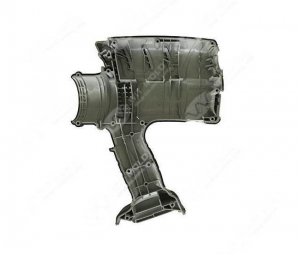There are a variety of manufacturing methods used to make plastic molded products. The two methods mentioned in this article, double shot molding, and over-molding, are viable manufacturing processes and provide some advantages for many plastic manufacturers. Both of these processes are difficult to master because they require very strict tolerances. Below, we discuss the differences and advantages of double-shot molding and over-molding.
Two-shot molding, sometimes called double-shot molding, is a manufacturing process that uses two different materials to produce complex molded parts by molding plastic around preformed metal or plastic inserts. The process is relatively simple; one material is injected into the mold to make the initial part of the product, followed by a second injection of another material that is compatible with the initial injection molded part. The two plastic resins then form molecular bonds, and the multi-resin molding is cooled and ejected.
Two Shot Mold is an ideal process for complex, multi-material, multi-color plastic products; especially in mass production scenarios. Other advantages include:
Lower unit cost.
Reduce costs and waste associated with assembly defects.
improve product quality.
Overmolding
Overmolding is the process of adding an extra layer of material to an existing piece or component. This process is usually used for manufacturing parts, sub-parts of parts, and prototype development. Typically, the substrate material (the first piece of other material that will be bonded and mechanically interlocked) is placed in an injection molding tool, at which point the mold material is shot into or around the substrate. When the over-mold material solidifies, the two materials are combined as a single part.
If you over-molding a metal part with plastic, you can really use any type of plastic. If you are over molding a plastic part with another plastic, there may be some compatibility issues. Your experienced molder will be able to recommend the best material for your project.
By adding textures, colors, and adding necessary functional components, over-molding can be added to change the surface of a piece or product. Other advantages include:
Enhance design flexibility and multi-material components.
Reduce secondary operations; assembly and labor costs.
Improve the strength and structure of parts.
As mentioned above, these processes are relatively easy to understand. However, it is very difficult to master. It requires a high level of technical expertise and attention to detail. When dealing with high-volume production scenarios, the smallest errors can also bring huge losses. This is why it is important to find a high-capacity molding manufacturer. Once you find one, you need to involve them early in the design phase of your part, because they can design value and quality into any problem area.


没有评论:
发表评论